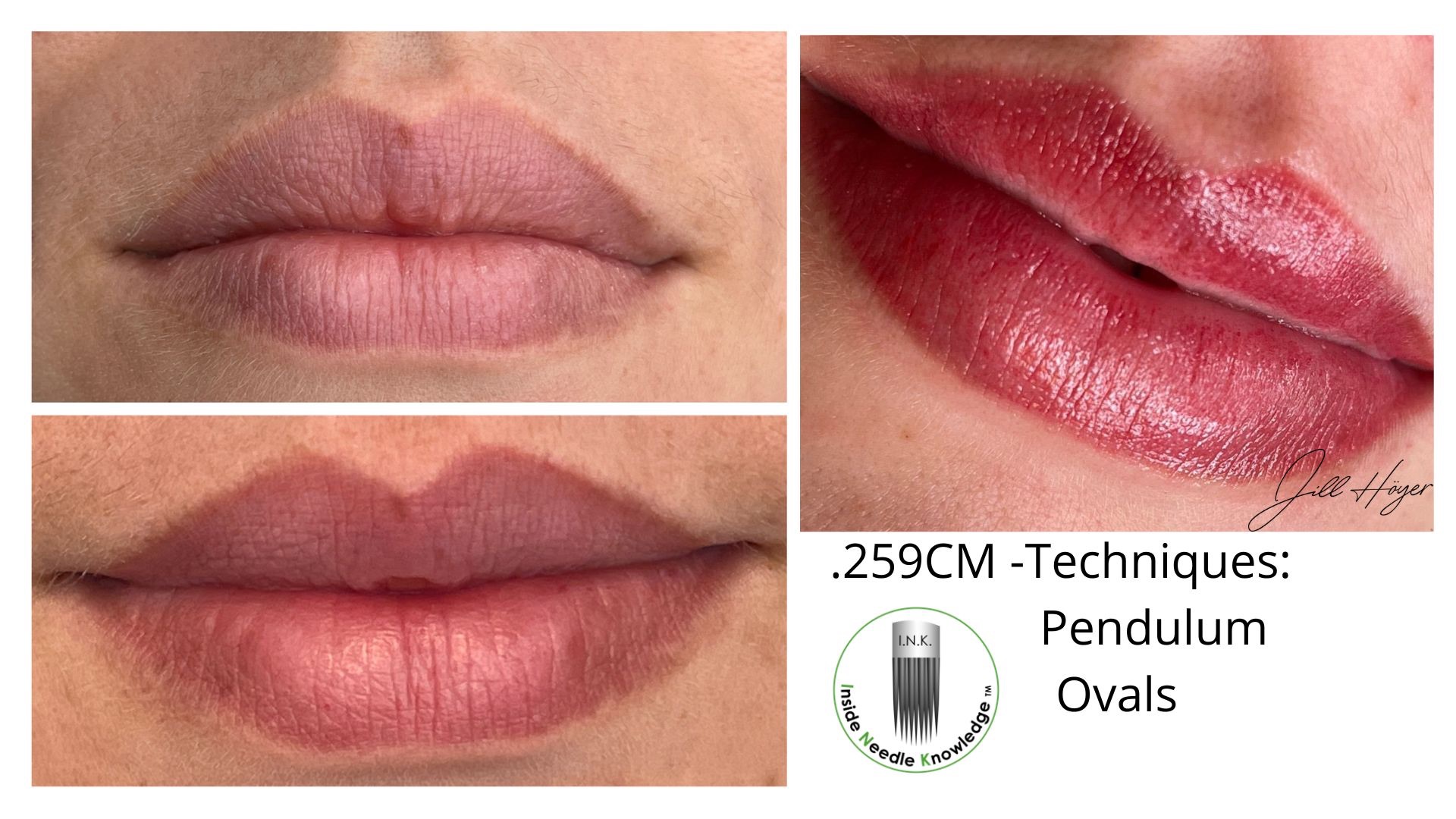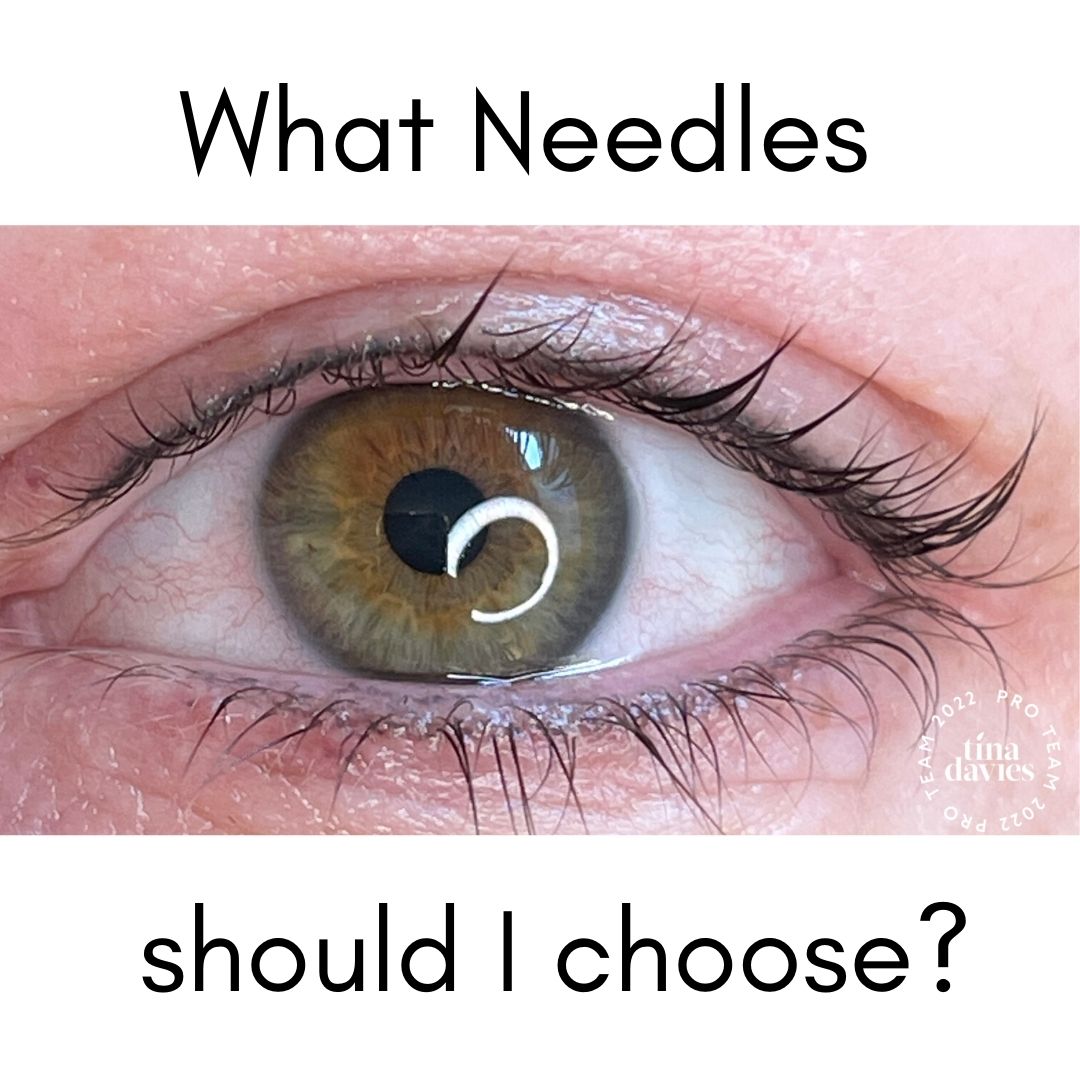The Art of Combining Needle Patterns in Permanent Makeup

Unlocking Creativity:
Permanent makeup artists understand that mastering needle configurations is foundational. But once you've grasped the basics, a transformative technique awaits: combining different needle patterns.
Why Combine Needle Patterns?
The true artistry of permanent makeup goes beyond using a single needle type. By strategically mixing patterns—like round liners, round shaders, and magnums—you can achieve dynamic results, depth, and dimension that a single needle pattern can't replicate.
Benefits of Mixing Needle Patterns:
1. Enhanced Dimension and Depth
Using multiple needle patterns can create layered effects. For example, starting with a curved magnum for a soft base layer and finishing with a fine round liner for precision detailing can add striking realism.
2. Versatile Textures
Different patterns yield distinct textures. Combining soft, pixelated patterns from round shaders with precise, crisp lines from round liners can elevate your artistry, creating lifeli...
How many tattoo needles should I use?

Given that permanent makeup is a detailed procedure and we are tattooing various skin types, it makes sense to be prepared with a variety needle options, even for one procedure. When it comes to choosing needles my client's skin and desired results are number one factors that I consider prior to selecting needles. Per procedure, I usually have 3 needles ready to choose from.
With 20 years experience behind the needle, I can use a variety of needles however, there is usually a choice that works better for the skin and procedure details at hand.
As an example, I love curved magnums for brows, eyes and lips. Many artists use this needle for eyeliner, however, I don't find this the best option. When navigating the 2 rows of needles with magnums, you can easily loose precision that the liner requires. I would prefer a liner or shader needle for more precision. However, if you prefer using magnums on the eyes you could use them above the line and softly feather in a dusting of color a...
Smooth Shading Techniques: The Power of Curved Magnum Needles in Permanent Makeup

As professional permanent makeup artists, we constantly strive to refine our skills and explore techniques to deliver outstanding results to our clients. In this educational article, we will discuss the art of smooth shading using curved magnum needles, sharing valuable insights and tips to help PMU artists elevate their shading game.
Understanding Curved Magnum Needles: Curved magnum needles are indispensable tools in the realm of permanent makeup shading. These needles are uniquely designed with a curved configuration, featuring a fan-like arrangement of grouped needles. The curvature facilitates optimal pigment distribution, making them highly effective for creating seamless gradients. The results are an airbrush type of pattern
Benefits of Curved Magnum Needles:
-
Improved Efficiency: The curved shape of magnum needles enables artists to cover larger areas more efficiently. By maximizing the surface contact with the skin, shading procedures can be completed more quickly while
...
Tattoo Needle Storage
This way of storing needles is the best way I've found, so far. Since I may choose 1-3 needles per procedure, it takes time to select needles and return them to the box if I don't use them.
My cabinet stays organized for about 6 months and then I find needles I didn't use loose on the shelves and need to do some organizing.
Right now I sort by vendor and find that is most useful when reaching for my favorites.
To your PMU success,

PMU Artist & Needle Specialist
Inside Needle Knowledge
Permanent Eyeliner Needle Choices

This is an everyday common question PMU artists ask themselves before every procedure.
There are several ways to choose needles and the SKIN is always in the forefront of my choice. When I consider the skin I also include my client’s goals and will come up with a technique based on that.
Then the fun part….choosing my needles👏👏👏
The delicate skin and small lash line requires a small needle configuration. I used precision needles in a .253RL, .253RS available at Tina Davies.
The liner (RL) gives me a denser pattern for the uppers ( which meets my client’s goals)and the shader (RS) gives me a less dense pattern for the lowers. Using a shader needle and a softer color create a dusting of color for the lowers.
How I use the selected needles with my machine and hand speed, pressure etc. is where my artistry comes together. 🧑🎨
To your PMU success,

PMU Artist & Needle Specialist
Inside Needle Knowledge
Purchase the I.N.K. Course Now
Curved Magnums-YES!
Why am I a fan of curved magnums? The curved magnum changed my artistry. Back when I started in the PMU world, I was using a machine that only proprietary cartridge needles would fit into. What that meant was that I was limited to certain needle groupings. Learning permanent makeup was hard enough, but these needles just didn't make sense to me....they were suppose to be my paint brushes so to speak and they didn't speak to me.
I ventured out and bought a tattoo machine that accepted several cartridge needle configurations in all shapes and sizes. I remember trying a 23 curved magnum on a practice pad. I thought how much quicker my procedures would be and the ease of creating a smooth pattern seemed effortless. As I continued to try different configurations such a larger round shaders 9,11 etc. I was continually impressed with the magnums. A 13 curved magnum for cosmetic procedures and larger such as a 17 curved magnum for areola tattooing became my favorites.
The benefit of a...
Needle Clarity
Several needle manufacturers include bugpin size needles and nano sizes in cartridge needles and manual needles. When deciphering tattoo needle sizes, bugpins, nanos, and taper, all come into play in different ways.
Bugpins are usually .30 or smaller, however when the sizes get really small they are referred to as "nano" size needles. There are no rules so to speak on what exact size needle is a bugpin or a nano, as that is up to the manufacturer to label the needles. It would be safe to say that a .12, .15, and a .18 are considered nanos.
A tip to remember:
✅The taper determines the end size of the needle as it touches the skin.
We don’t always have exact taper information but you can identify it if it’s listed on the packaging code or use an eye loupe to help.
Hope that helps with needle clarity and some of the terms we hear today as PMU artists.
- To your PMU success,

PMU Artist & Needle Specialist
Inside Needle Knowledge
Purchase the I.N.K. Course Now
IG jillhoyer
Tattoo needle configurations guide
The below guide is one of the several downloads from the course and is a suggestion on tattoo needle types and the usages.
To your PMU success,

PMU Artist & Needle Specialist
Inside Needle Knowledge
Purchase the I.N.K. Course Now
IG jillhoyer
DRAG AND DROP THE NEEDLE GUIDE TO YOUR DESKTOP

Have you heard of the saying, "it doesn't matter what needle you choose, just as long as you know how to use it." If you're a new PMU artist or a seasoned artist who is just venturing out of using a couple of different needle configurations, this is a frustrating statement. How do you know how to use needles when you never were taught needle theory in basic fundamental training? Today, there is a big need for needle theory. How to use needles makes much more sense when we understand the basics of what we are using and why we are using it. Needles our important as they dictate the footprint left behind in the skin.
In the online course, www.insideneedleknowledge.com, I further explain...
The Single Needle Pixel Effect
Can you believe all the single needle sizes available in today's PMU market?
The single needle used during the "fine line" era of traditional tattooing for entire tattoos, has been primarily used in PMU for pointillism, hair strokes and a shaded effect known as "the pixel technique." Although most needles could be used to do the pixel technique, this video and article is mainly about the single needle sizes used to pixel and when you may choose one size over the other.
Using a single needle or group of needles, the pixel technique is a combination of machine speed and hand speed that creates a dot like pattern in the skin. The slower the hand speed the closer the dots and the faster the hand speed the further the dots are apart. With the pixel technique, there is skin space between pixels and this lends to a soft look similar to powder.
With so many different sizes and tapers of single needles available, which sizes are optimal for pixelating? Based on my experiences and needl...
Tattoo Needle Sizes and Tapers
With so many needle choices today it can be a bit confusing. Starting with the basics, the video explains all about our needle size systems and tapers.
To your PMU success,

PMU Artist & Needle Specialist
Inside Needle Knowledge
